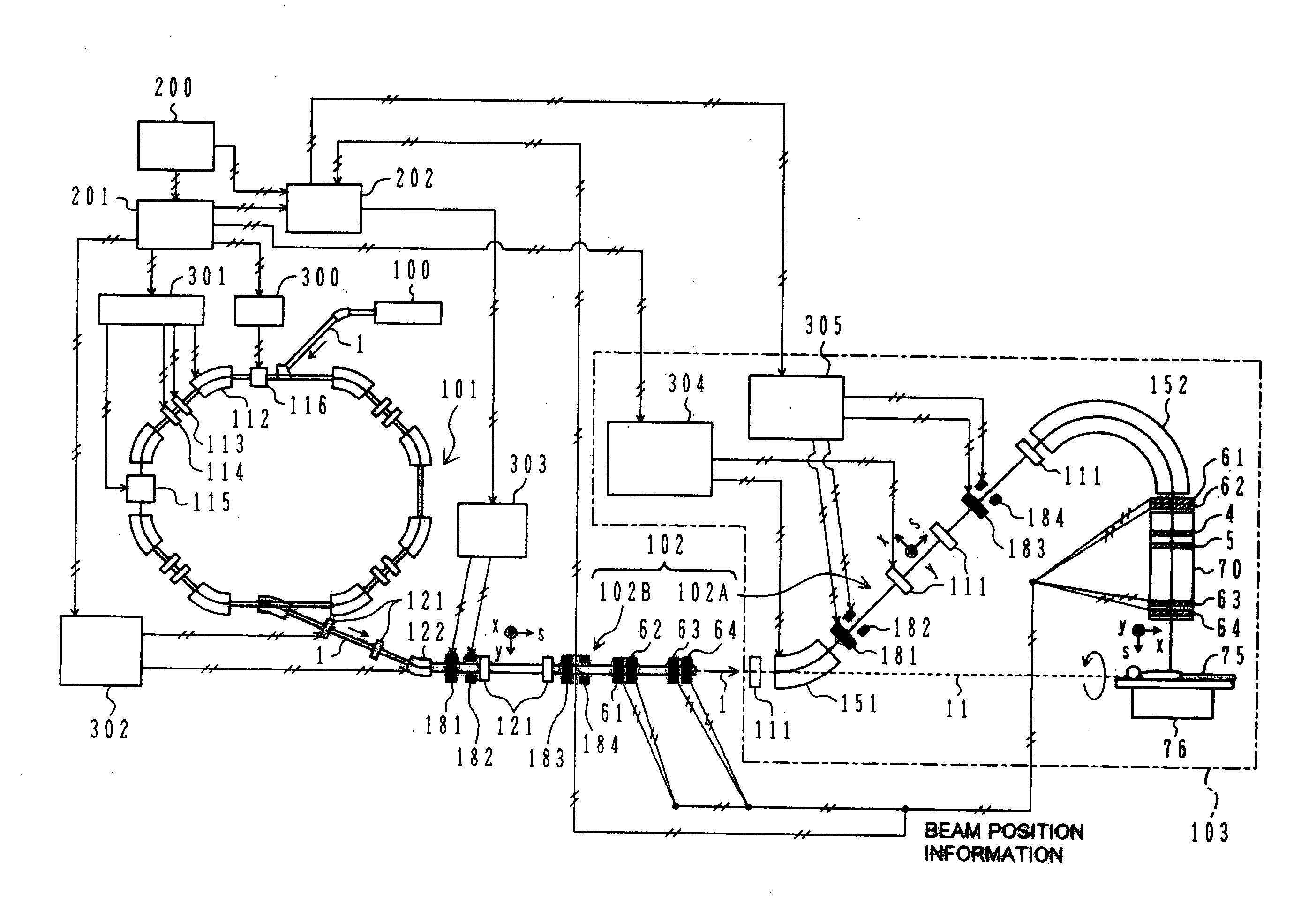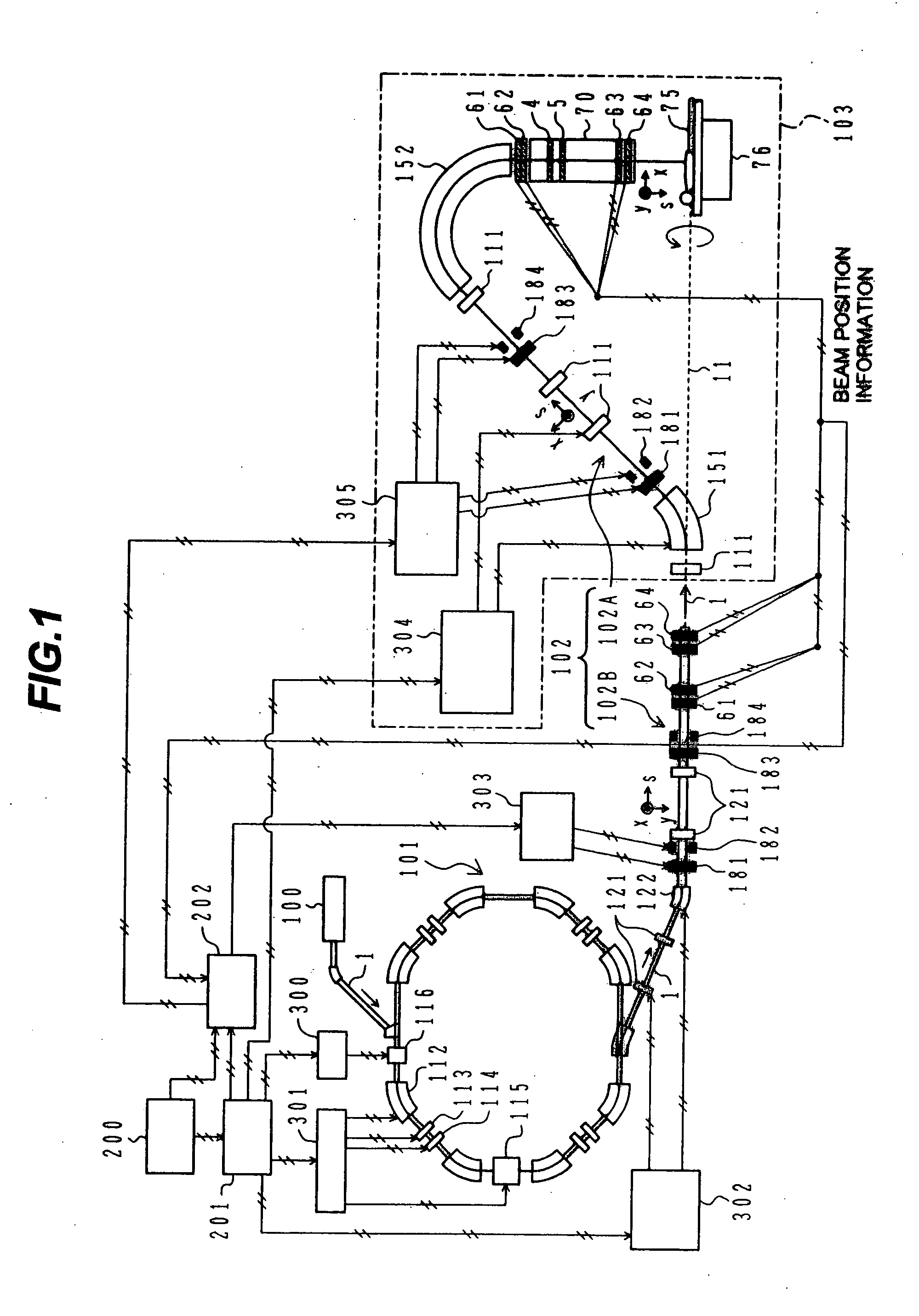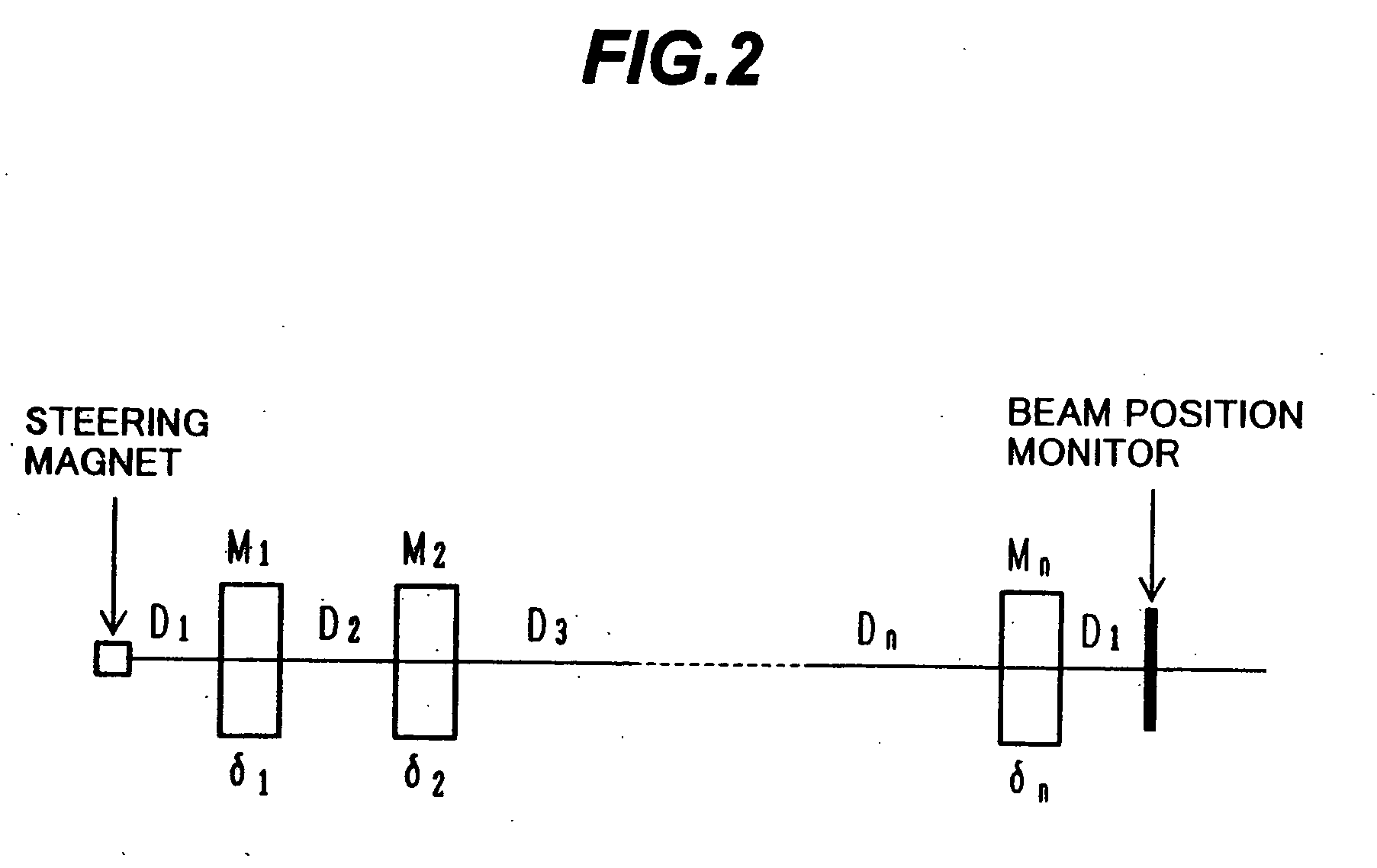Particle therapy system
a particle therapy and system technology, applied in the field of particle therapy system, can solve the problems of troublesome operation, unavoidable deviation of the direction of the beam axis, and large labor and time required to carry out the operation of correcting the beam orbit, and achieve the effect of simple and quick correction of the beam orbi
- Summary
- Abstract
- Description
- Claims
- Application Information
AI Technical Summary
Benefits of technology
Problems solved by technology
Method used
Image
Examples
first embodiment
[0045] the present invention will be described with reference to FIGS. 1 to 5.
[0046]FIG. 1 is a system block diagram showing the overall construction of a particle therapy system according to a first embodiment of the present invention. For easier understanding of the overall construction, FIG. 1 includes, on the same drawing sheet, a side view showing the construction on the side of a rotating irradiation facility 103 (described later) and a plan view showing the construction of the remaining section on the side of a main accelerator 101 (described later). Correspondingly, to avoid misunderstanding, FIG. 1 also includes an x-coordinate axis representing a direction vertically upward from the drawing sheet, an s-coordinate axis representing a direction of beam propagation, and a y-coordinate in a direction perpendicular to both the x- and s-axes. Further, to avoid complication of the drawing, a flow of part of signals is not shown.
[0047] In FIG. 1, a particle therapy system of this...
second embodiment
[0126]FIG. 6 is a system block diagram showing the overall construction of a particle therapy system according to this To avoid complication of the drawing, a flow of part of signals is not shown as in FIG. 1.
[0127] A description is now made of the principles of this second embodiment, which differ from those of the above first embodiment.
[0128] Generally, as stated in, e.g., OHO′ 94 “Fundamentals of Beam Dynamics in Electron Storage Ring”, page I-44, a transfer matrix between two A and B points in a particle design orbit can be expressed as given below using Twiss Parameters at each point: 𝕄=(βbβa(cos Δψ+αasin Δψ)βaβbsin Δψ-1+αaαbβaβbsin Δψ+αa-αbβaβbcos Δψβbβa(cos Δψ-αbsin Δψ))(3-1)
[0129] In the above formula (3-1), β represents a betatron function, α represents an amount defined by a α=−(½)×dβ / ds with s being a coordinate value along the beam design orbit, an affix a represents a value of the point A, and an affix b represents a value of the point B....
third embodiment
[0135] the present invention will be described with reference to FIG. 7. This third embodiment employs steering magnets having different functions from those used in the above embodiment.
[0136]FIG. 7 is a system block diagram showing the overall construction of a particle therapy system according to this third embodiment. To avoid complication of the drawing, a flow of part of signals is not shown as in FIGS. 1 and 6.
[0137] In the particle therapy system of this embodiment, as shown in FIG. 7, a single first x-y direction steering magnet 190 is provided in place of the first x-direction steering magnet 181 and the first y-direction steering magnet 182 in the first beam transport system 102A of the first embodiment shown in FIG. 1, and a single second x-y direction steering magnet 191 is provided in place of the second x-direction steering magnet 183 and the second y-direction steering magnet 184.
[0138] Employing the x-y direction steering magnets 190, 191 is effective in reducing ...
PUM
 Login to View More
Login to View More Abstract
Description
Claims
Application Information
 Login to View More
Login to View More - R&D
- Intellectual Property
- Life Sciences
- Materials
- Tech Scout
- Unparalleled Data Quality
- Higher Quality Content
- 60% Fewer Hallucinations
Browse by: Latest US Patents, China's latest patents, Technical Efficacy Thesaurus, Application Domain, Technology Topic, Popular Technical Reports.
© 2025 PatSnap. All rights reserved.Legal|Privacy policy|Modern Slavery Act Transparency Statement|Sitemap|About US| Contact US: help@patsnap.com



